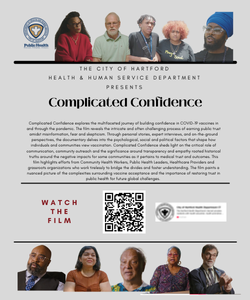By Renata Sago
Somatic abolitionism is a lifelong journey of releasing trauma from the body, and it that can begin at any age. For LaShona Sugg, it often starts with a soulful embrace. LaShanda Sugg says she is a soul hugger.
She does not give just a standard embrace. Sometimes, it is a spirited connection without physical touch; an invitation to laugh or yell or rest in response to a thought or happening. The contact is deep, ineffable, and what she believes is a way to repair centuries of damage Black people like herself have suffered from all the –isms — racism, sexism, classism, colorism.
“We as Black folk in this country often feel extremely — oh, the word was there — disenfranchised,” she says. “We are not seen as valuable, purposeful souls in human form and we’ve been treated terribly. If we can get into relationship with our nervous system, then the way that we have responded — the way we have had to respond, personally, intergenerationally, and ancestrally to the things that are happening in the world — then we can have more control over those responses.”
That relationship with one’s inner self is the central concept behind somatic abolitionism, a form of racial healing that Sugg practices and uses as a therapist.
Its origins are in an early 19th-century theory that unresolved trauma and emotions linger in the body and soul — the soma — causing imbalance if not properly addressed. In its modern application, somatic abolitionism is straightforward: to fight racism, an individual must abolish it from their body first. That happens by eliminating white-body supremacy and racialized trauma. It is among several movements to raise individual and collective consciousness through cellular-level healing.
Somatic abolitionism “is essentially knowing and understanding that soma, the body, our nervous system, are all impacted by the life we live and what I call the ‘human flesh suit,’” says Sugg.
Her path to this work began in 2012, as Sugg’s long-term romantic relationship unraveled. In therapy, she soon realized her body had been carrying the weight of past traumas — some of which she had experienced first-hand, and others that had been passed down.
She was introduced to somatic abolitionism through a nine-month cohort with Resmaa Menakem, a leader in the movement, and Education for Racial Equity, a nonprofit devoted to communal healing. Through guided instruction, she developed the language and techniques to begin helping others, gaining a unique perspective along the way.
“The biggest observation I’ve made is the reality that at one point in time, our bodies were literally considered animals,” she says. “Our bodies were used for production. Now, in a very similar way, but a somewhat disguised way, we’re not animals. We’re machines” connected wirelessly to our jobs, without much thought to the harm done to our bodies.
“We’re often disconnected from our bodies and feelings, and there’s been some emotions that have been ‘acceptable’” especially if you are Black,” Sugg says
She goes on: “So think about anger. When it’s in a male Black body or male-presenting black body, anger is acceptable and they’ve channeled it through force, but they didn’t capitalize off of it. But those same young black boys who are told ‘Man up, don’t cry, become Black men,’ who are so disconnected from that experience.”
Individual and collective responses to stress, threat or danger vary for Black Americans and other ethnicities. However, Sugg observes five options: flocking, fleeing, fighting, freezing, and fawning. The inclination to call a confidante after a stressful event is an example of flocking. Fleeing is to withdraw from connection after an incident.
“Sometimes it’s distraction: ‘I’m’a just scroll on social media.’ It’s mindless scrolling,” Sugg says. “You just are trying to get some distance from the person, the situation, the event, the environment that’s causing stress, threat, and danger.”
Fighting is an aggressive response, taking shape in the form of physical movement; think demonstrations or uprisings. Freezing, she says, is feeling unable to take any action. Fawning is the opposite: helping a person or situation to the point of self-abandonment.
While the responses are neither good nor bad, “We do them all in some capacity in and out everyday,” Sugg says. “But most people don’t know this. So when something is happening in their life and they’re having a response, that response is automated: It’s worked before, so they’re going to keep doing it, but it’s wreaking havoc on their relationships. They don’t like the impact of that response, but most people don’t know that they can work to change that.”
To process and release pent-up emotions, one must observe the body by embracing stillness and presence, then recognize breathing patterns and the body dealing with immediate stresses, Sugg says. The constant demands of capitalism, she says, results in many Black people to sleepwalk through daily life with disconnected, dysregulated nervous systems.
“There is a distinct lack of rest,” in part because of racial trauma, she says. Because of the Black liberation struggle, Sugg says, “rest is seen as weakness. I have had so many older Black people say throughout my life, ‘I’ll rest when I die.’ And it literally breaks my heart.”
She encourages building and cultivating a relationship with the nervous system at all ages, from infants to seniors.
“There is no time/age limit to this. Once we understand it, it just shifts how we engage with ourselves and others. That’s why that healing can go frontward and backwards. It’s not just for us.”
This article was originally published in Word In Black.





